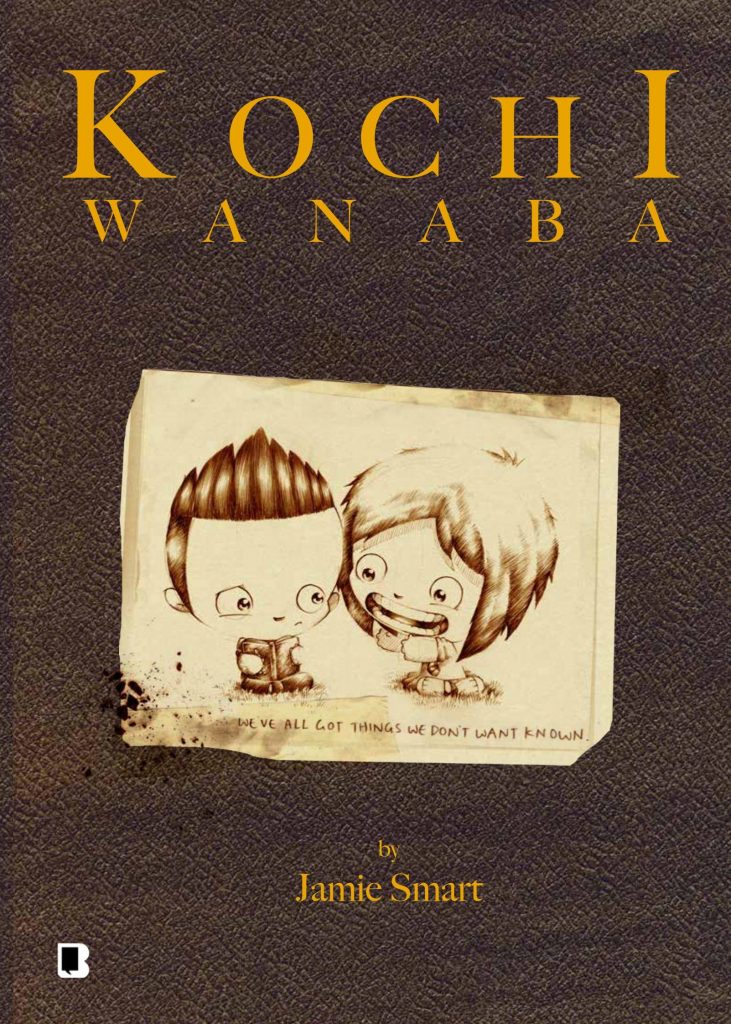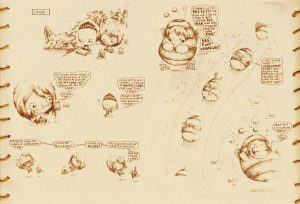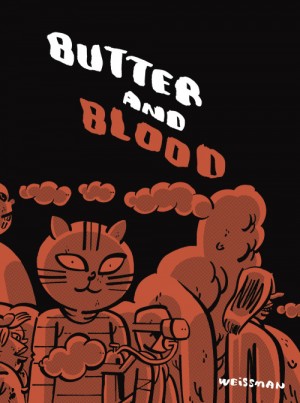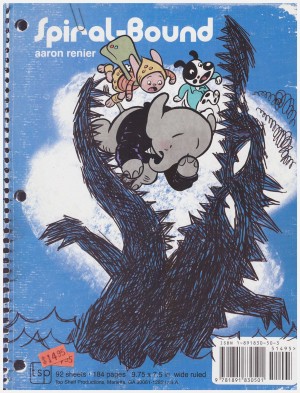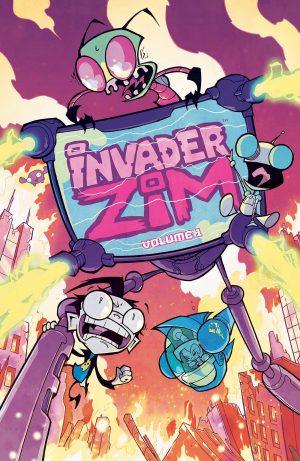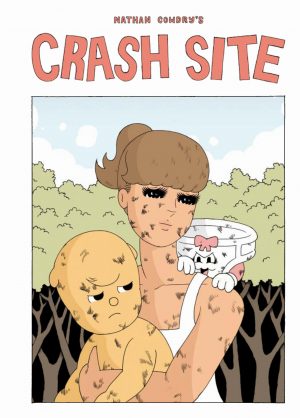Review by Frank Plowright
In the light of Jamie Smart’s subsequent success with Bunny vs. Monkey and other comedy knockabouts for younger readers, Kochi Wanaba comes as a complete surprise. It’s presented as a combination of notebook, sketchbook and diary maintained by Kochi Wanaba, complete with faked ring binding, sepia parchment pages and squashed insects. For some reason insects are attracted to the introverted Kochi, and he draws little incidents from his daily life.
This begins with the announcement of the annual Bee Festival, which is a big event for Kochi’s town, dating back centuries to a time when the bees stung all inhabitants, who subsequently died. It’s weird seeing such morbid content, along with copious swearing and unpleasant characters in Smart’s work, which has come to be associated with wacky humour from manic personalities, never mind the completely different style of art. Here Smart’s drawing cute kids with big, round heads.
It all has the feel of a work in progress, of Smart trying a style to see how it fits by noodling around with it. There’s no great connecting thread to Kochi Wanaba, just a bunch of kids hanging out and messing about, griping at each other and trying to fill the hours. He manages to channel the combination of innocence and cruelty in children, and this has surreal touches, just no sense of them fitting into anything larger. The illustrations, though, are great, really cute and stylish, just not connected as well as they might be.
At one point one of Kochi’s friends notes they’re all weirdos hanging about together until they can find something better to do, and in the light of Smart’s career progression that’s easily taken as a personal comment. He’s funny in places, but always with a disturbing undertone, and where he eventually takes the story is surprising, although it has been set up, and it’s confusingly told with no great sense of location. According to the notes Smart provides, his intention was always to produce a very personal story requiring interpretation, which is all well and good for readers wanting to read and re-read and ponder the significance of the details, but most won’t. It makes for a very indulgent hundred pages.
